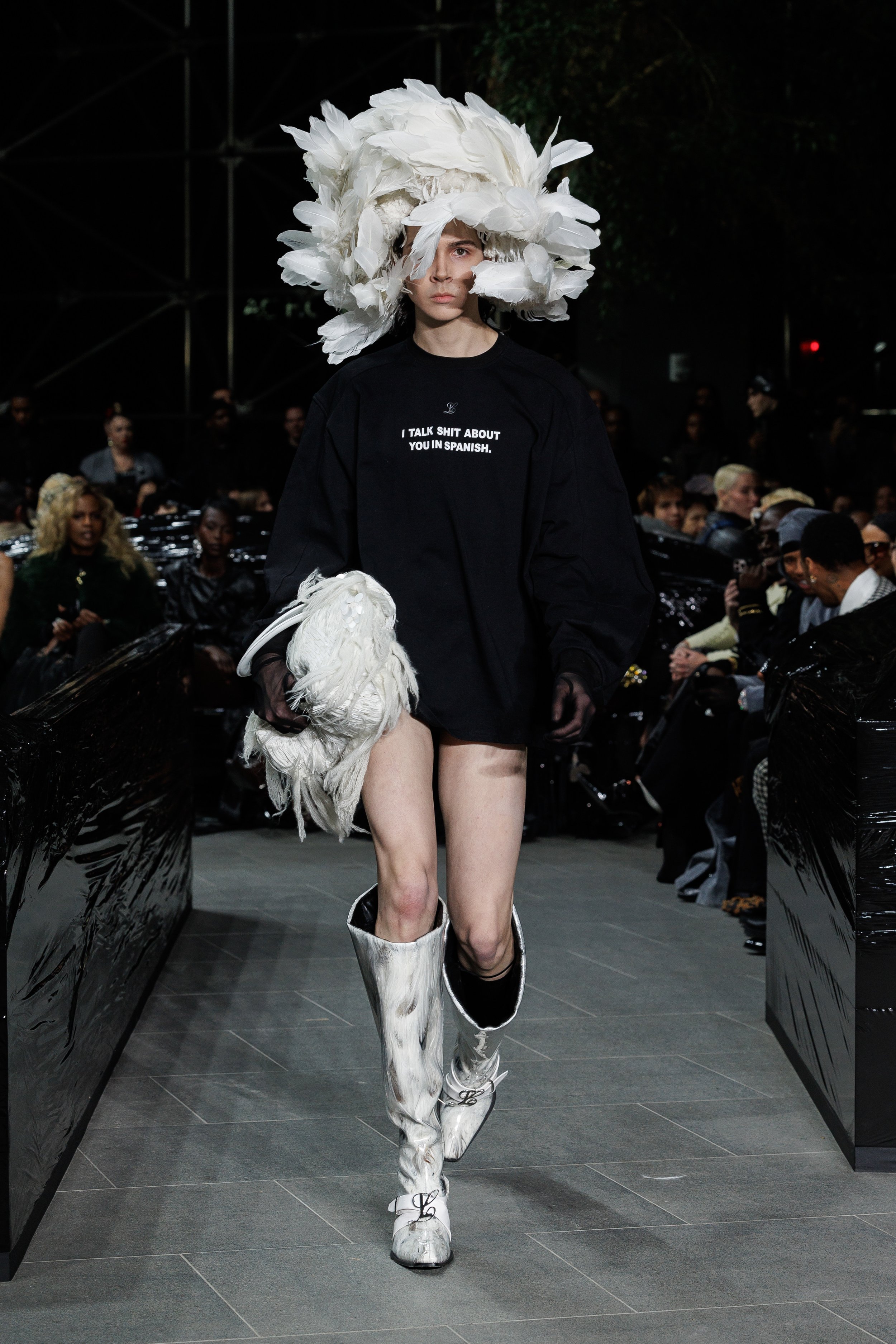‘El Pato’: Luar FW25.
“I’m not going in the closet for nobody.” So declared Luar’s Raul Lopez backstage after presenting his Fall collection.
Lopez titled his show “El Pato,” a slur used against gay men, that he said he wanted to reclaim. His show notes expanded upon the invective with a poem that referenced Simón, the trans protagonist of Willie Colón’s 1986 song "El gran varón,” which also appeared on the soundtrack. This announced a collection that was unabashedly and unmistakably queer. Bold 80’s-influenced proportions harkened spiritually to the transgressive bravado of the Ballroom club scene. Exaggerated shoulders, asymmetric necklines, cowled hoods and rectangular, shield-like sunglasses abounded. Dramatic feathers were affixed to lapels and transformed into a striking headpiece. Softer headgear was draped and wrapped in homage to little boys who used towels to create a vogue on mom’s hair while playing dress-up. Two spins on the catsuit, one starkly sleek, the other, zhuzhed-up theatrical, featured structured sleeves that posed the models’ arms in a limp-wristed gesture, a nod to an oft-mocked body language. The move played as winking and defiant, yet also wistful. Conversely, Lopez injected a shot of overt humor in a sweatshirt declaring, “I talk shit about you in Spanish.” Another powerful moment came when Ballroom legend Stephanie Milan walked the runway. She carried a new take on Lopez’s Ana bag, named for his mother, who embraced her son backstage, radiating pride as he spoke with journalists.
Lopez’s messaging was clear: Queer people should celebrate their identity and remain fiercely committed to it, no matter the larger cultural circumstances. And fashion is a conduit for doing so. But it’s one thing to send a strong socio-political message. It’s another entirely to back it up with impressive clothes. Lopez’s devotion to craft started early, inherited from his father, a construction worker, and his mother, a seamstress, who gave him his first sewing machine. The clothes here were beautifully crafted, Lopez’s impeccable tailoring and attention to detail evident in looks ranging from almost minimal to complicated, inventive constructions. When asked to ruminate on the weight of his work now, during a dark time for the queer community in the United States, Lopez retained an air of joyful defiance: “We all kind of move this whole world together,” he said. “Luar is that. This is a platform to bring people together…Immersing people in the same way I feel, I want people to feel that when they come to my shows.”




































